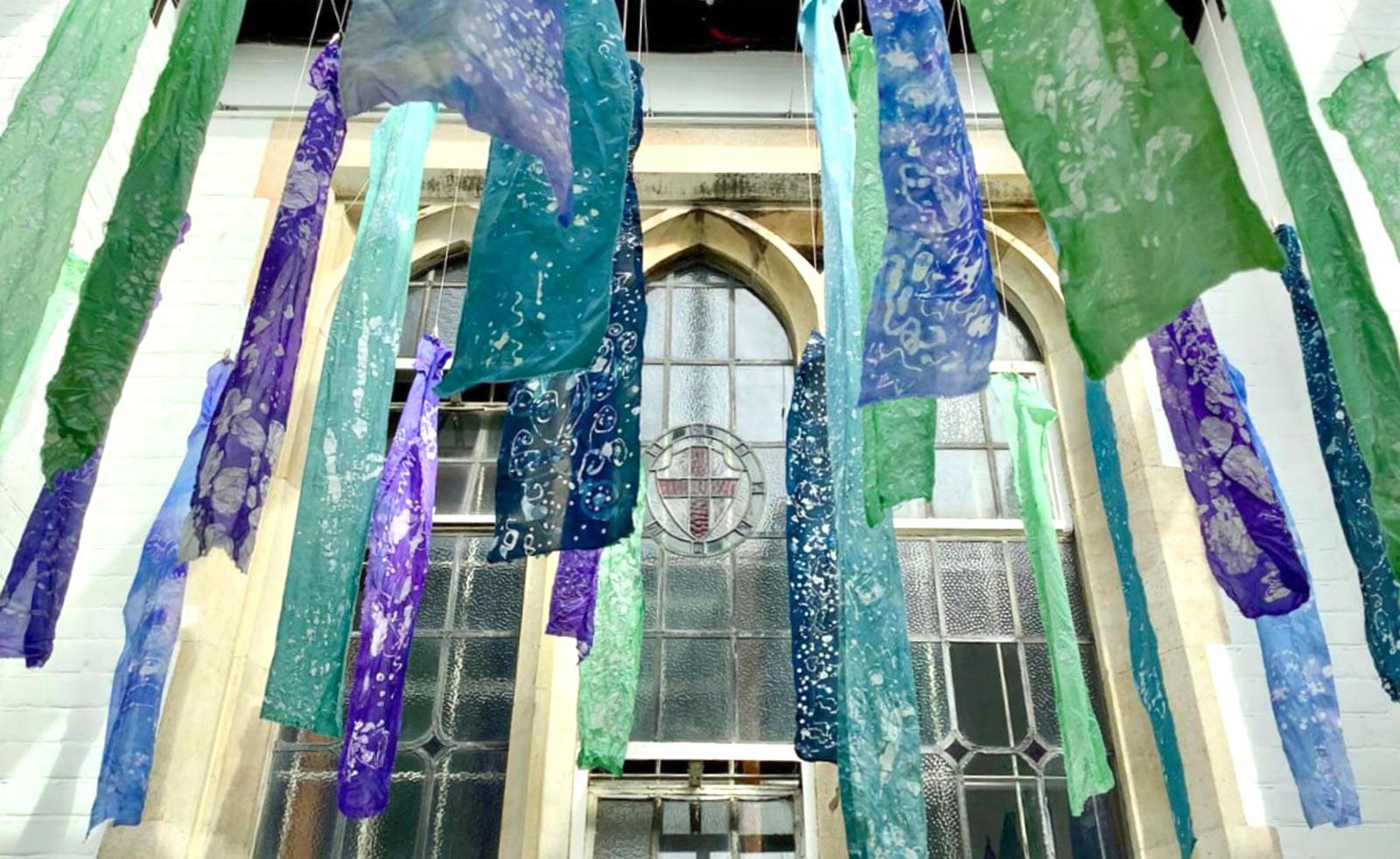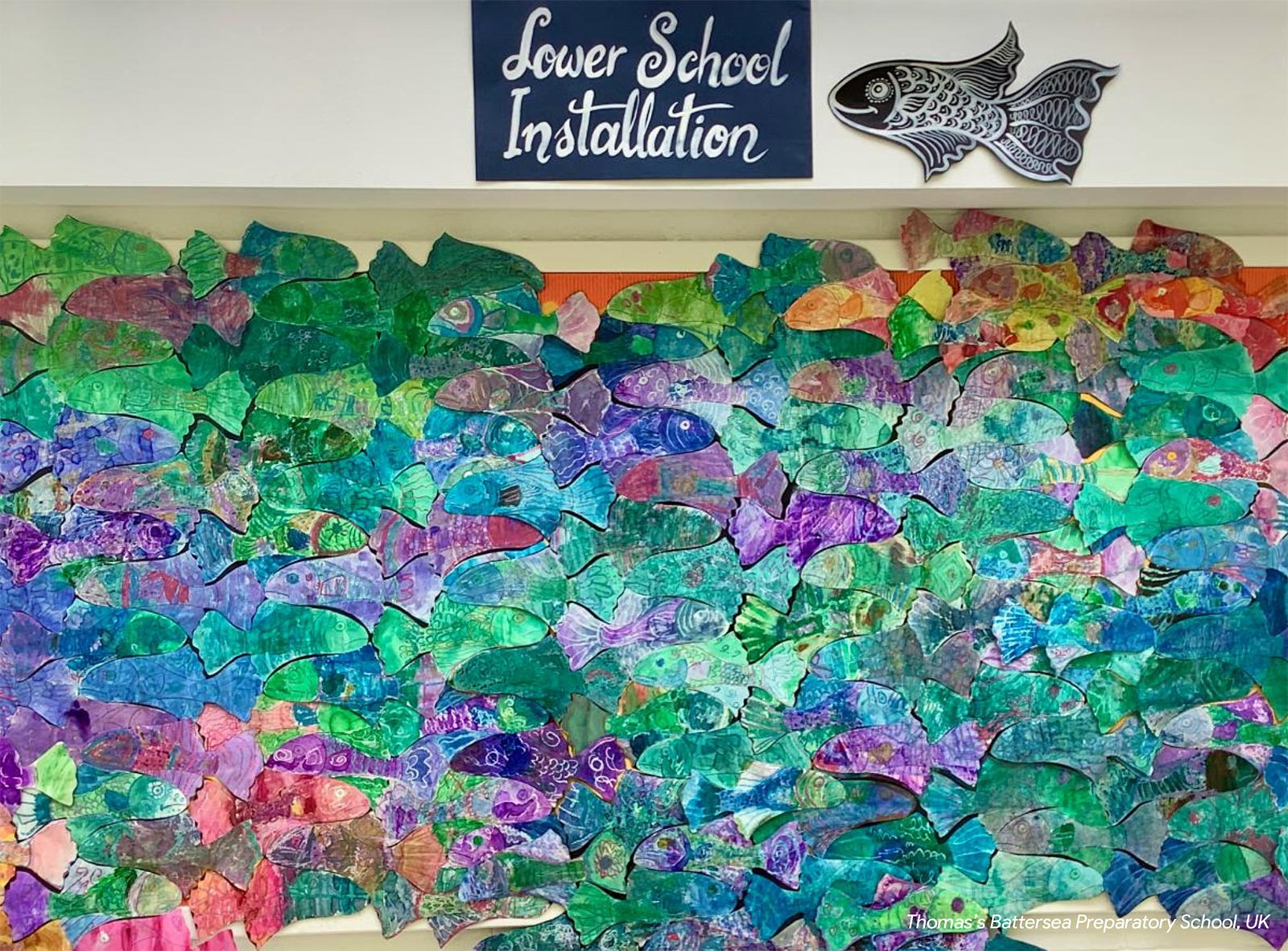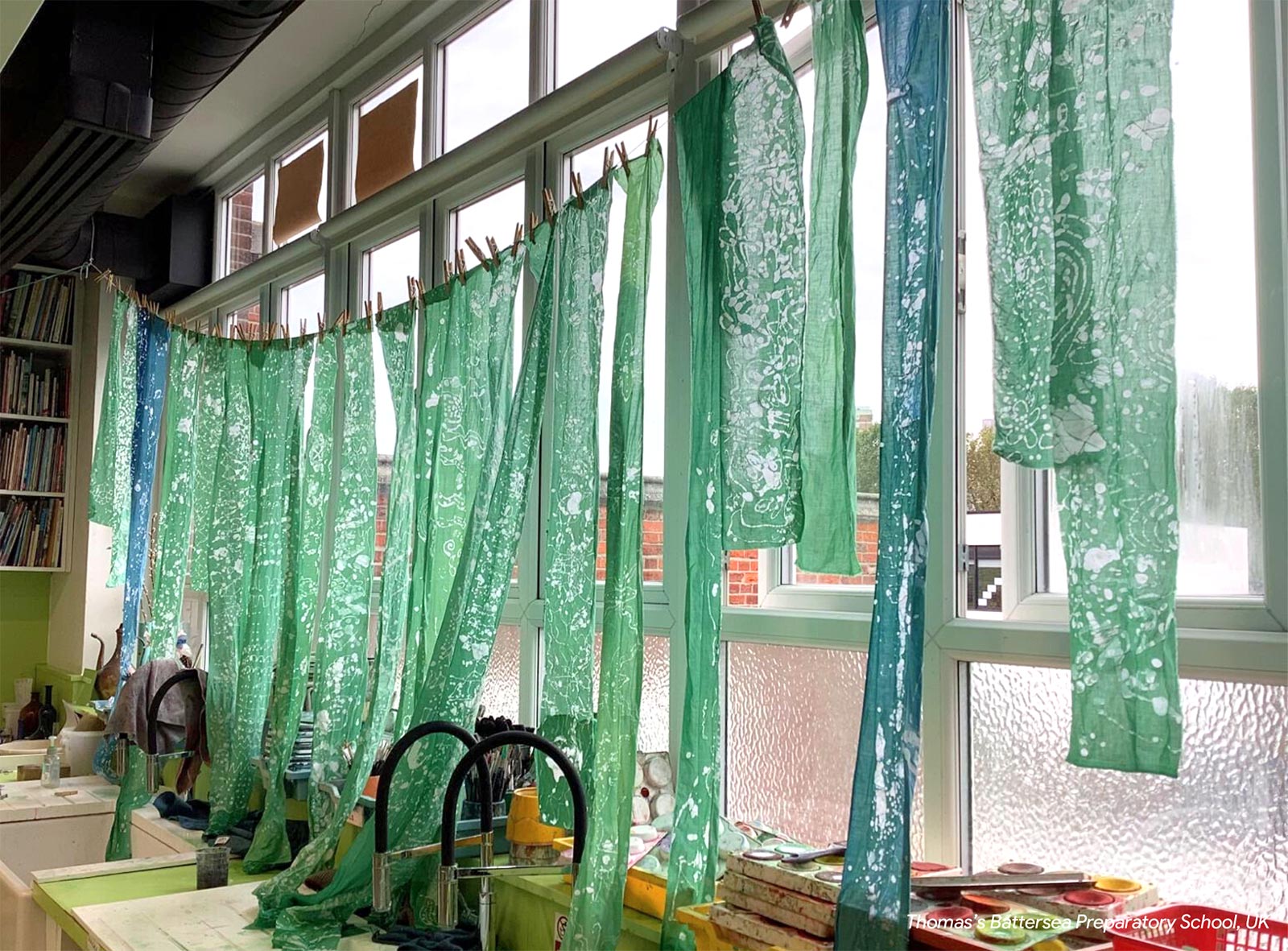
Thousands of miles away from Indonesia, students at Thomas’s Battersea Preparatory School in London embarked on a mesmerizing week-long exploration, or quest, centred around the theme of “Beautiful Batik”. Batik, an ancient art form originating in Indonesia, boasts a rich and vibrant history dating back over a millennium. Its name is derived from the Javanese word ‘amba,’ meaning to write, and ‘titik,’ meaning dot, reflecting its intricate wax-resist dyeing technique.

Over the centuries, this traditional craft spread across the Indonesian archipelago, evolving distinct regional styles and patterns influenced by local customs, beliefs, and folklore. The intricate patterns and vibrant colors of batik also served as a means of cultural heritage that holds many stories. Batik continues to thrive as a celebrated art form, bridging the past with the present, inspiring artists worldwide.
In Bayat, Klaten, there are many batik artisans, but over time, interest in batik has declined. However, some young people or alumni of Titian Foundation who pursue careers in batik continue to preserve their cultural heritage. These batik artists and their work inspired the project undertaken by Thomas’s Battersea Preparatory School. In Thomas’s Battersea Preparatory School, this interdisciplinary program engaged pupils across all year groups, spanning from Reception to Year 8 (ages 4-13), showcasing the school’s commitment to holistic education. With approximately 580 pupils participating, the school community extended beyond students to include parents, grandparents, and staff members through a “Batik Drop-in Workshop.”

The learning journey was tailored to the developmental stages of the students, divided into Lower, Middle, and Upper School sections. In the Lower School, young learners explored batik-inspired patterns using oil pastels on watercolor paper, culminating in the creation of personalized bookmarks. Meanwhile, they collaborated on a colorful tessellated fish installation, showing their teamwork and creativity. Middle School students delved deeper into batik techniques, experimenting with gutta on cotton bags to design unique patterns. Their collaborative effort resulted in a striking patchwork on canvas, symbolizing unity amidst diversity.

For Upper School students, the focus shifted to practical applications as they designed personalized pencil cases using gutta. Additionally, they embraced the traditional batik method, using wax and canting on silk pieces, which were subsequently dyed and displayed as a hanging installation. Through individual and collaborative activities, students not only honed their artistic skills but also cultivated teamwork, creativity, and cultural appreciation. “Beautiful Batik” served as the school’s dedication to providing a rich and diverse learning experience that creates both personal growth and community cohesion.
It is an honor for Titian to have the opportunity to share the knowledge of batik culture to Thomas’s Battersea students through various accomplishments/works of Titian’s alumni. It is truly heartening to see the names of Titian’s alumni prominently featured on an art installation: Anitasari (Gen 2), Rekna Indri (Gen 5), Rizky (Gen 6), Andi (Gen 3), Hesti (Gen 4), Putri Danis (Gen 2), and Suryanti (Gen 2).


We are also grateful for the chance to interview a key role in shaping the creative vision and bringing the installation to life: Thomas’s Battersea Preparatory School art teacher, Ella Kate Harrison.
Hi, Ella! What is the main purpose of creating the art installation apart from honing the students’ creativity?
Ella: It was really exciting for the pupils to try a new skill and learn about batik; they loved to work creatively. However, to ensure a deeper level of understanding we also studied the wider context of batik. Younger pupils heard story books about how batik is passed through families. Older students explored the trade links of batik and how it has inspired textiles across the world. We also had a session where pupils researched about life in Indonesia. It was important to share knowledge to young people to help keep this beautiful art form alive. The main purpose of this project was to learn from another culture and learn lessons from communities apart from our own. To look outwardly as a young artist is vital to allow the development of empathy, a more rounded understanding of the world and to admire the work of others. Batik is a beautiful craft that is important to Indonesian culture. To marvel at any craft during this busy technological world can only be a good thing. It was also really important that pupils understand the importance of preserving cultural heritage.. It was also important for the pupils to understand how the arts can support people in their lives and that you can create a career from it. It was important that our students understood how learning Batik at the vocational college in Bayat, allowed the young students further education and a career path, which might not have been possible without the Titian Foundation’s work.
How did the students feel about this activity? What are their takeaways and were there any unique moments during this event?
Ella: From the youngest child to the oldest child, everyone had a go. It was a real leveller as it was a new learning experience for all. They enjoyed the practical elements immensely and there was a real buzz that week. The pupils were thoughtful about the young students in Bayat and absolutely amazed by their skills! They had a fantastic time and were also conscious of the schools’ value “givers not takers.” This meant they understood that they are very lucky in their school environment and were very thoughtful about the young people in Indonesia. A beautiful moment was during the Batik Drop-in Workshop, when a young child brought their grandparents to have a go. Seeing knowledge shared across three generations was something really special.

What are your thoughts on this art installation process/result, particularly as an art teacher?
Ella: As I reflect upon this project, I am most pleased with the sense of community that can be created by practising the arts. To watch a pupil in year three, share their knowledge and expertise with a parent or grandparent surely demonstrates the power of the arts. Learning a new skill is a privilege and taking the time to practise that skill and share it builds community at a deeper level. Making art is not only good for the soul but also allows people freedom; whether that be freedom from the daily stresses of life or increased financial freedom. I feel there is so much more we can do to support the Titian’s work and therefore supporting its young people. Who knows what the next step might be? I feel incredibly grateful to the Titian Foundation for their kindness to provide us with resources to be able to make this project happen. I hope we can collaborate again in the future. As an artist as well as an educator, I am already excited about using the batik technique within my own practice too.

